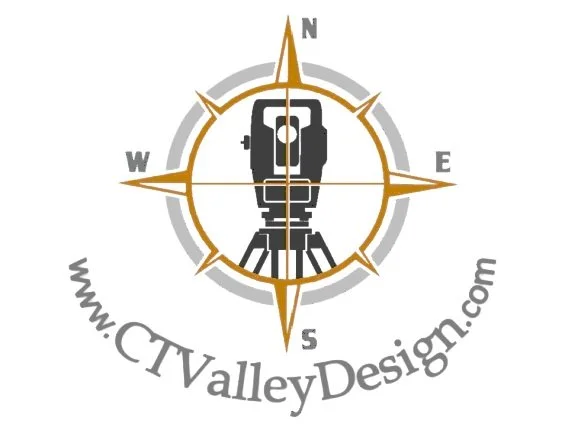Design Development
Soils study: 3 or more test pits are usually excavated to 6 feet or ledge, which ever is higher, and perc tests are conducted in shallow hand dug holes.
Topographical survey: This is a survey of the existing site in the area of the proposed waste water disposal system. It gathers horizontal and vertical positioning information for the ground, buildings, walks, drives, fences, property lines, well, utility lines, drainage structures, ledge, and anything else that may be located in the vicinity of the proposed well or waste water system. The information gathered in the field, by robotic total station, is transferred to CAD drawing software, upon return to the office.
Base map drafting: Coordinate points gathered by survey, in the field are interpreted in the drawing of the map representing the existing site conditions, including all site features and 2 contour lines.
System design: The septic system is designed and drawn on the base map, following system manufacturers design requirements and the State waste water rules.
Attachments: Permit application and attachments are developed that go with the design for submission to the State.
Land Owner review: When the design and application is complete, it is sent or emailed to the Owner for review. When the Owner is satisfied with the design, and signs the application for permit, it is ready to upload to the State for review. The submission process, to the State, is 100% electronic (paperless) in Vermont.
Permit approval: When the State approves the design and issues the permit, they send the permit, but not approved paper drawings, to the Owner. Hogg Hill Design then plots the approved drawings, stamped by the State, on paper (24 inches by 36 inches) to be sent to the Owner. The State posts the permit and drawings on the internet, as pdf files. The permit files are available to the public for viewing or download.


